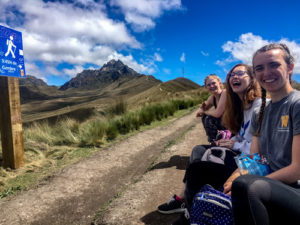Managing an ever-increasing number of faculty-led study abroad programs requires a well-coordinated and established strategy to ensure that the process is timely, accurate, and efficient. From coordinating each program and facilitating the student application and onboarding process to managing and tracking travel itineraries and handling associated administrative procedures, there is a long list of action items.
At Western Michigan University, we offer more than 40 faculty-led study abroad programs and send more than 600 students abroad to over 30 countries each year. As our programs have grown tremendously over the past few years—both in the amount of program options and volume of student participation—we were outgrowing our simpler procedures and needed a way to efficiently standardize the full study-abroad lifecycle to meet increasing demands while facing decreases in funding.
The search for a new software solution
Our next logical move was to evaluate the technology we were using to determine if it could be used to do more. We were using Terra Dotta Study Abroad to handle processes involved only in study abroad student applications and faculty travel registration. While this captured information necessary for risk management, we decided to examine how the other, less-used features could facilitate our other administrative processes that were largely handled through email. For an expanded system, we needed a clear vision connecting all processes and workflows into one comprehensive dashboard.
Related: 7 ways studying abroad helps students land sought-after jobs
We began by engaging all internal stakeholders who are part of our university-wide study abroad environment to ensure their willingness to participate in a transformative improvement initiative. This group included professionals in the study abroad office, cross-departmental faculty, marketing, human resources, budget analysts, and relevant institutional leadership members. It was critical to communicate our goal of helping them improve their ability to perform their job responsibilities and to clarify that we weren’t asking them to do anything materially different. We received a resounding amount of support from these team members, which laid the groundwork for a successful launch point.
Automating study abroad blueprints
As a next step, we created process maps, including designated “swim lanes” with all stakeholder workflows that are running chronologically and simultaneously. This document played a key role in creating transparency around each person’s role and dependencies with other team members. This step also included improving and standardizing existing processes for creating new programs versus ones that already exist, e.g., site visits, reimbursement parameters, etc.
Our team began leveraging several of the software functions available in Study Abroad to automate our established workflows and provide a structure for staff to understand what to do next based on designated job roles. This was critical for enabling our processes to be sustainable, as each person no longer needs to track down individuals to move to the next stage. It serves as a hub where stakeholders can access key information as needed or when prompted by the system. For example, when a new program’s final proposal has been approved, the study abroad director changes its status in the system to “authorized to recruit.” This status change triggers a query watch that sends an email to relevant stakeholders to begin developing marketing materials, website/brochure content, etc., and prompts designated staff members to schedule a budget meeting. It also provides each person a checklist of what to do next based on their respective role. This level of automation helps us move steps along more quickly and enables our university team members to stay on top of priority tasks.
Related: 5 best practices for streamlining your study-abroad program
By implementing an automated and progressive approach to managing the entire faculty-led program lifecycle, we can accommodate growth and expand Western Michigan’s programs. In fact, we’ve recently had a large increase in faculty-led programs, including five new Spring Break programs in 2018.
By routing Western Michigan’s faculty-led program management through an automated system rooted in efficiency and work ownership, we will be able to focus on providing more enriching global experiences for our current and future students.
